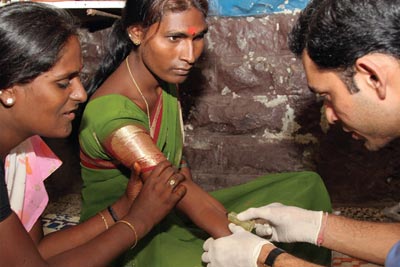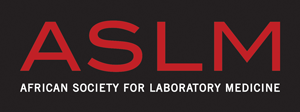Resources
-
Publication
Viral Load and Early Infant Diagnosis ISME Community of Practice Reference Manual

The VL/EID ISME Reference Manual published by PEPFAR and the Centers for Disease Control and Prevention is a guide for Implementation Subject Matter Experts (ISMEs) who offer either in country or remote technical assistance in VL/EID scale-up.
Author(s) TBD Originally published on December 16, 2025 Posted on February 14, 2019
-
Publication
Developing A Monitoring And Evaluation Framework For Viral Load Testing

The 2013 WHO consolidated guidelines on the use of antiretroviral drugs for treating and preventing HIV infection recommend viral load as the preferred monitoring approach to diagnose and confirm ART failure. As countries invest in the scale-up of routine viral load testing, it is critical to measure the impact and progress towards achieving the UNAIDS target of 90% viral suppression amongst patients on ART by 2020. This document presents key considerations and examples of tools (provided in the appendices) to assist countries in developing a national viral load (VL) monitoring and evaluation (M&E) plan.
Author(s) WHO Originally published on October 1, 2018 Posted on November 15, 2018
-
Publication
What’s New In Treatment Monitoring: Viral Load And CD4 Testing

Treatment initiation
- ART should be initiated in all children, adolescents, pregnant and breastfeeding women and adults living with HIV, regardless of WHO clinical stage and at any CD4 cell count.
- ART should be initiated in all children, adolescents, pregnant and breastfeeding
women and adults living with HIV, regardless of WHO clinical stage and at any CD4 cell count. - As a priority, ART should be initiated in all children, adolescents and adults with severe or advanced HIV clinical disease and adults with a CD4 count ≤ 350 cells/mm3 as well as children < 5 years of age with WHO clinical stage 3 or 4 or CD4 count ≤ 750 cells/mm3.
Author(s) WHO Originally published on July 1, 2017 Posted on November 15, 2018
-
Publication
Technical And Operational Considerations For Implementing HIV Viral Load Testing

This publication provides high-level guidance on implementing and scaling up HIV viral load testing programmes for health ministries and implementation partners, using a three-phased approach: (1) planning; (2) scale-up; and (3) sustainability. The guidelines for managing antiretroviral therapy (ART) issued by WHO have recognized the importance of viral load monitoring since 2003. Routine viral load monitoring is now strongly
recommended as the monitoring strategy of choice.Author(s) WHO Originally published on July 1, 2014 Posted on November 15, 2018
-
Publication
Considerations For Adoption And Use Of Multi-disease Testing Devices In Integrated Laboratory Networks

Several new laboratory technologies are available or are being developed to allow for testing of different conditions using disease-specific tests on the same platform. For example, a single device may be able to test for the presence of tuberculosis (TB) and HIV, and quantitatively measure HIV and hepatitis C viral load by using disease-specific reagents or cartridges with self-contained nucleic acid testing technology. Some of these technologies are being designed for use at centralized reference laboratories while others
may be positioned for use at or near to point of care.Author(s) WHO Originally published on June 1, 2017 Posted on November 15, 2018
35Resources found...
Filter by ticking the boxes below and then click apply
projects
- SLIPTA
- Laboratory Networks
- LabCoP
- Point-of-Care
- Laboratory Mapping
- Integrated Diagnostic Consortium
- Other
resource type
- Blog Article
- e-Learning
- Guidelines
- Map
- Presentation
- Publication
- Report
- Video
- White Paper
- Other
topics
- Antimicrobial Resistance
- Biosafety/Biosecurity
- Continuous Quality Improvement
- Diagnostic Technology
- Emerging Infectious Diseases
- Global Health Security
- HIV/AIDS
- Laboratory Clinic Interface
- Laboratory Information Systems
- Laboratory System Strengthening
- Laboratory Workforce
- Policy and Guidelines
- Public-Private Partnerships
- Quality Management Systems and Accreditation
- Sample Transportation
- Tuberculosis
- Viral Load Scale-Up
- Waste Management
- Other

